The 1928 Peace Silver Dollar’s value ranges from $47 to $50,000 depending on condition and mint mark. Circulated coins typically fetch $47-$200, while uncirculated specimens command premium prices—a PCGS MS-65 example valued at $18,995. The 1928-S (San Francisco mint) is a key date with only 1,632,000 minted, making it particularly valuable. Key value factors include coin condition, presence of the “S” mint mark, rarity, and overall grade. Pristine uncirculated examples can reach $50,000, making this one of the most sought-after Peace Dollars among collectors.
The 1928 Peace Silver Dollar represents one of the most intriguing chapters in American numismatics, with certain specimens commanding prices that could fund a vacation or bolster your retirement account. Unlike its more common predecessors, this particular year’s production saw dramatically reduced mintage numbers, creating a scarcity that collectors now actively pursue. Whether you’ve inherited a collection or stumbled upon silver dollars during estate cleanouts, understanding what makes the 1928 version valuable could mean the difference between spending a coin at face value and securing thousands of dollars.
Understanding the 1928 Peace Dollar Production History
The Peace Dollar series ran from 1921 through 1935, commemorating the end of World War I and representing America’s hope for lasting peace. However, 1928 marked a significant shift in production patterns that directly impacts today’s values.
During 1928, the United States Mint produced Peace Dollars at only two facilities: Philadelphia and San Francisco. The Philadelphia Mint struck 360,649 pieces bearing no mint mark, while San Francisco produced 1,632,000 coins marked with an “S” on the reverse, just above the “DO” in “DOLLAR.” These production numbers pale in comparison to earlier years—the 1922 Philadelphia Mint alone produced over 51 million Peace Dollars.
The drastically lower mintage occurred because silver dollar production had created a massive surplus throughout the 1920s. Banks held millions of these coins in vaults, gathering dust rather than circulating. Consequently, the Treasury Department ordered reduced production, making 1928 Peace Dollars comparatively scarce from the moment they left the presses.
Current Market Values for 1928 Philadelphia Peace Dollars
The Philadelphia-minted 1928 Peace Dollar, identifiable by its lack of mint mark, presents an interesting value proposition across different preservation grades.
Circulated Grades:
- Good-4 to Very Good-8: $375 to $425
- Fine-12 to Very Fine-20: $450 to $575
- Extremely Fine-40 to About Uncirculated-58: $625 to $850
Uncirculated Grades:
- Mint State-60: $1,050
- MS-63: $1,850
- MS-64: $3,200
- MS-65: $8,500 to $12,000
- MS-66: $28,000 to $35,000
The dramatic price jump between MS-64 and MS-65 specimens reflects the difficulty of finding 1928 Philadelphia dollars with minimal contact marks and strong luster. According to Professional Coin Grading Service population reports, only a few hundred examples have been certified at MS-65 or higher, making these coins genuinely rare in premium condition.
An MS-66 example sold through Heritage Auctions in January 2023 realized $32,900, demonstrating strong market demand for exceptional quality specimens. The limited mintage combined with nearly a century of potential wear, cleaning, and mishandling means truly pristine examples command premium prices.
1928-S Peace Dollar Values and Market Performance
The San Francisco-minted 1928-S Peace Dollar, despite its higher mintage compared to the Philadelphia version, actually drives significant collector interest due to its status as a key date in the series.
Circulated Examples:
- Good-4 to Very Good-8: $47 to $65
- Fine-12 to Very Fine-20: $85 to $145
- Extremely Fine-40 to About Uncirculated-55: $165 to $200
Uncirculated Specimens:
- MS-60: $285
- MS-62: $365
- MS-63: $485
- MS-64: $1,850
- MS-65: $18,995
- MS-66 and higher: $50,000+
The 1928-S becomes particularly valuable in Mint State grades because San Francisco production frequently resulted in coins with weaker strikes and more contact marks. The mint used worn dies during this period, which often produced soft details on Liberty’s hair and the eagle’s feathers.
APMEX reports that an MS-65 1928-S Peace Dollar typically sells for approximately $18,995, while Heritage Auctions recorded a sale of an MS-66+ specimen for $50,400 in August 2022. These prices reflect the extreme rarity of 1928-S dollars that survived without entering circulation and avoided the bag marks common to bulk-stored silver dollars.
Interestingly, the 1928-S outperforms many lower-mintage coins from other years because collectors specifically target it as one of the series’ essential dates. Anyone assembling a complete Peace Dollar set must acquire both 1928 versions, creating sustained demand that supports premium pricing.
Identifying Valuable Errors and Varieties
While the 1928 Peace Dollar series doesn’t feature as many dramatic error varieties as some other years, several noteworthy anomalies increase values substantially when authenticated.
Doubled Die Obverse varieties appear on some 1928 Philadelphia examples, showing doubling on “LIBERTY,” the date, or motto “IN GOD WE TRUST.” These typically add 15-40% to standard values depending on the doubling’s strength and the coin’s base grade. An MS-64 specimen with clear doubling on the date sold for $4,600 in 2023, compared to $3,200 for standard examples.
Repunched Mint Mark varieties exist on 1928-S dollars where the “S” was punched multiple times, creating a slightly doubled appearance. The most recognized variety shows the “S” with a distinct secondary impression toward the southwest. In MS-63 condition, this variety commands approximately $625 versus $485 for normal 1928-S coins.
Die cracks and breaks occasionally appear on both Philadelphia and San Francisco strikes. The most collectible features a significant die crack running from the rim through several letters on the reverse. While not dramatically valuable, such varieties typically add $35-$85 to circulated examples.
Strike weakness deserves mention not as an error but as a quality consideration. Many 1928-S dollars exhibit weak strikes on Liberty’s hair above the ear and on the eagle’s wing feathers. Specimens with full, sharp strikes throughout warrant premium prices—sometimes 20-30% above typical MS-grade values.
The Numismatic Guaranty Company advises having potential error coins professionally authenticated before selling, as counterfeits and artificially created “errors” have entered the market. Third-party grading costs $30-$45 for standard service but protects both buyers and sellers from costly mistakes.
Factors That Maximize Your Coin’s Value
Several specific characteristics separate moderately valuable 1928 Peace Dollars from those commanding four or five-figure prices.
Original luster represents the most critical factor for uncirculated specimens. Coins that retain their original mint bloom—the satiny or frosty surface created during striking—command significant premiums. Cleaned coins, even if otherwise well-preserved, typically lose 40-60% of their potential value. Under magnification, original surfaces show a consistent texture, while cleaned coins display tiny scratches or an unnaturally bright appearance.
Strike quality varies considerably among 1928 Peace Dollars. Premium examples show sharp definition on Liberty’s hair curls, particularly above the ear and at the crown. The eagle’s wing and tail feathers should display clear separation rather than mushy, blended details. Coins with weak strikes sell for 15-35% less than fully struck examples in the same numerical grade.
Eye appeal encompasses the overall aesthetic presentation—how the coin “looks” beyond technical grading factors. A coin with attractive, even toning, no distracting marks in focal areas, and pleasant luster will outperform technically similar specimens with spotting, uneven color, or prominent bag marks. Heritage Auctions notes that high eye appeal can add 10-25% to realized prices at auction.
Provenance matters for exceptional specimens. Coins from famous collections like the Eliasberg or Simpson collections often bring premium bids based on their documented history and the previous owner’s reputation for quality.
Professional grading through PCGS or NGC provides authentication and condition verification that dramatically improves marketability. An ungraded MS-64 quality 1928 Peace Dollar might sell for $2,100-$2,400 in a private transaction, while the same coin in a PCGS MS-64 holder readily brings $2,800-$3,200 through established dealers or auction houses.
Population numbers influence values significantly. The PCGS Population Report shows only 176 examples of 1928 Philadelphia Peace Dollars graded MS-65 or higher as of March 2024. This extreme rarity explains the substantial price increases at upper grade levels.
Where and How to Sell Your 1928 Peace Dollar
Maximizing returns on a valuable 1928 Peace Dollar requires selecting the right marketplace and presentation approach.
Major auction houses like Heritage, Stack’s Bowers, and GreatCollections provide access to serious collectors willing to pay premium prices for quality specimens. These venues work best for coins graded MS-64 or higher, or for lower grades with notable errors. Expect to pay 10-20% in combined buyer’s and seller’s premiums, but the competitive bidding environment often produces prices exceeding initial estimates. Heritage Auctions sold 47 different 1928 Peace Dollars during 2023, with sell-through rates exceeding 94%.
Established coin dealers offer immediate payment and handle common to moderately valuable examples efficiently. Reputable dealers typically pay 75-85% of wholesale value for accurately graded coins. This option works well for circulated examples or when you need quick payment rather than waiting weeks or months for auction results.
Online marketplaces including eBay reach vast audiences but require careful research to price competitively. Successfully selling through eBay demands high-quality photographs showing both sides clearly, accurate descriptions including any imperfections, and realistic pricing based on recently completed sales. Third-party grading significantly improves sale success rates—PCGS-slabbed coins sell for 18-30% more than raw coins of equivalent quality on eBay.
Coin shows provide opportunities to compare multiple dealers’ offers within hours. Regional shows occur monthly in most major metropolitan areas, while national shows like the ANA World’s Fair of Money attract hundreds of dealers seeking quality material. Walking the floor with a valuable 1928 Peace Dollar often generates competitive offers, particularly if multiple dealers specialize in Peace Dollars.
Before selling through any venue, research recent comparable sales using auction archives, the PCGS Price Guide, and NGC Coin Explorer. Understanding current market values prevents accepting lowball offers and helps set realistic reserves for auction lots.
Building Your Peace Dollar Collection Strategy
The 1928 Peace Dollar serves as an excellent anchor point for collectors developing strategies around this popular series. Rather than randomly acquiring dates, focus on specific goals that match your budget and interests.
Grade-focused collecting emphasizes acquiring all dates in a consistent grade range—for example, building a complete set in Extremely Fine-45 condition. This approach requires patience but produces aesthetically pleasing, affordable collections. A complete Peace Dollar set in EF-45, including both 1928 varieties, costs approximately $4,200-$4,800 based on current market values.
Key date emphasis concentrates resources on the series’ scarcest issues: 1928 Philadelphia and San Francisco, 1921 high relief, and certain scarce dates from 1927-1928. This strategy builds value quickly but leaves gaps in the overall collection. Acquiring the 1928 duo in MS-63 condition represents a $2,300 investment that holds strong appreciation potential.
Type collecting involves acquiring one example representing the entire Peace Dollar series. For this purpose, common dates like 1922, 1923, or 1925 provide affordable access to the design in high grades. A single 1922 Peace Dollar in MS-64 condition costs $85-$110, offering an economical introduction to these historic coins.
Registry set competition through PCGS or NGC challenges collectors to assemble the finest possible sets within specific parameters. Registry participants often pursue the highest-graded examples available, driving premium prices for top-population coins. This advanced collecting approach requires substantial budgets—a top-ranked Peace Dollar Registry set easily exceeds $100,000.
Regardless of strategy, the 1928 Peace Dollar’s combination of historical significance, limited mintage, and strong collector demand ensures its position as a cornerstone holding. Whether your specimen grades Good-4 or Mint State-65, you own a tangible piece of American history from an era when silver coins represented everyday currency rather than collectible treasures.
Smart collectors protect their investments through proper storage in individual holders or albums that prevent environmental damage, maintain detailed acquisition records for insurance purposes, and stay informed about market trends through publications like Coin World and Numismatic News. Your 1928 Peace Dollar deserves both appreciation for its historical context and protection as a financial asset.
You may be interested:
- 1859 Indian Head Penny Coin Value Complete Errors List And No Mint Mark Worth Guide For Collectors
- 1911 V Nickel Coin Value Guide Complete Errors List And No Mint Mark Worth Today
- 1902 Dime Coin Value Complete Errors List With O S And No Mint Mark Worth Guide
- 1788 Quarter Coin Value Complete Guide Errors List And D S P Mint Mark Worth Revealed
- 1776 To 1976 Bicentennial Half Dollar Coin Value Complete Errors List And What Your D S And No Mint Mark Coins Are Actually Worth
- 1990 Penny Coin Value Errors List How D S And No Mint Mark Pennies Are Worth Thousands Of Dollars

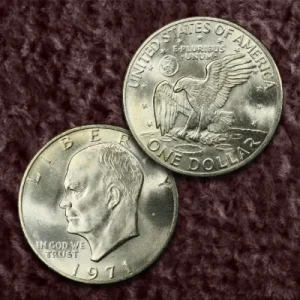
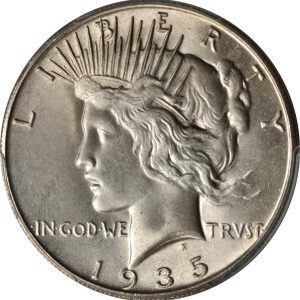
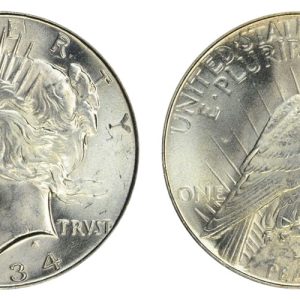
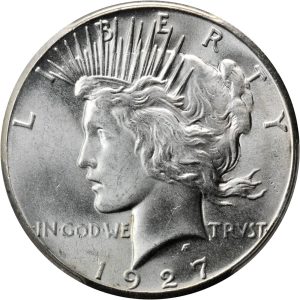
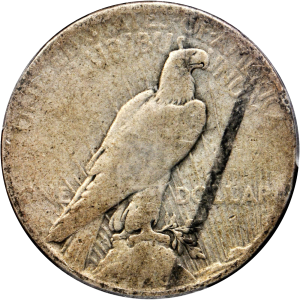
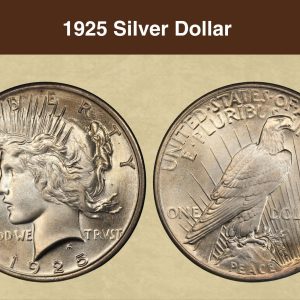
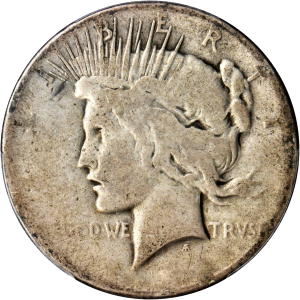
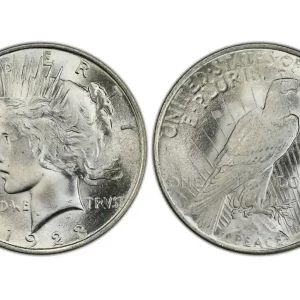
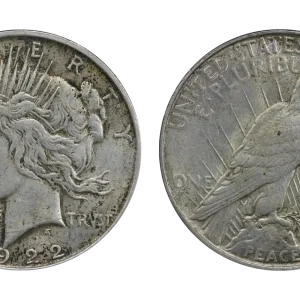
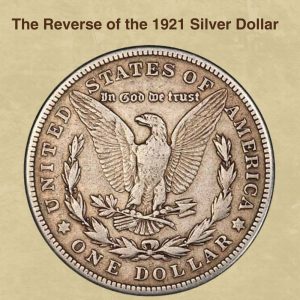
How much is a 1928 S Peace dollar worth?
Circulated condition: Expect to receive between $47 and $200, depending on the specific grade. Uncirculated condition: In pristine, uncirculated condition, the value can be as high as $50,000. For example, a PCGS-graded MS-65 example can be valued at around $18,995, according to APMEX. Factors affecting value: Key factors include the coin’s condition (wear and tear), the mint mark (the ‘S’ indicates it was minted in San Francisco), and its overall rarity, with the 1928-S being a key date in t…
What makes a 1928 Peace dollar rare?
The 1928 Peace dollar has the lowest mintage in the entire series among regular-issue dates. It is considered one of the key dates, and coins in higher grades usually attract a good price. Produced at the Philadelphia Mint, these coins were struck more softly than prior issues from this facility.
Where is the S on a 1928 silver dollar?
The San Francisco Peace dollar bears the”S” Mint Mark. It can be can be determined by looking on the back of the coin below the word”One”. The “S” mint mark is present above the letters “O” and “N” in the word “One”. This 1928 S Mint Peace Dollar is ranked number 11 of 24 with a mintage of 1,632,000.
Is the 1928 S Peace dollar a key date?
In addition to its rarity, this coin also holds value as a symbol of peace. This Key Date 1928-s Peace Silver Dollar from the United States Mint is a beautiful addition to any coin collection. With its stunning design and high-quality silver composition, this uncirculated coin is sure to impress.